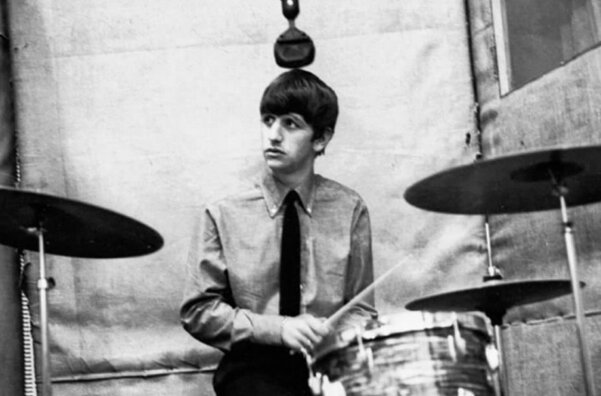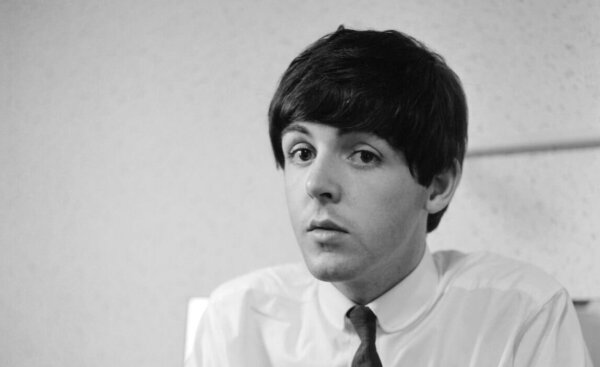Hearing ‘Free as a Bird’ for the First Time

I was born in 1968, two years before the Beatles broke up.
I missed it all — the invasion of America in 1964, Sgt. Pepper, the Maharishi, the rooftop concert. By the time I started listening regularly to pop music, John Lennon was dead, Ringo Starr was playing a caveman, and Paul McCartney was writing such jewels as “Temporary Secretary” and “Rudolph the Red-Nosed Reggae.”
I had to play catch-up, but once I became hooked, I devoured all their music at once, browsing through their back catalog like it was an old manuscript. To me, the Beatles were more historical figures than performers, forever captured in black and white film footage, sometimes in sharp suits with their mop tops, and other times jamming in Abbey Road Studios, their wide-eyed innocence replaced by long hair, cigarettes and tension between them that was strung too tightly.
But like other historical figures, they became larger than life. The sheer number of their songs that were now standards — “Yesterday,” “I Want to Hold Your Hand,” “Hey Jude” — astounded me. But I was even more impressed by the “filler” material — lesser-known songs such as “For No One,” “Oh! Darling!” and “Dear Prudence” that would have been hit singles for any other group. For me, Clapton was not God; Lennon and McCartney were.
So when “The Beatles Anthology” documentary aired in late 1995, followed closely by the three-volume, six-disc CD compilation, I was ready to add more hype to the Beatles legend. But then I heard that as a prelude to the release, two new Beatles songs were to be released, using old Lennon demos as a foundation. McCartney, George Harrison and Starr were to finish what Lennon had started, in essence bringing the band together for the first time in 25 years.
A new Beatles song.
I never had a chance to hear a new Beatles single, but for the first time, I could hear one at the same time as millions of other people. I could count the days until its debut. I could buy the single. I could watch the song’s progress up Billboard‘s Hot 100. (For you millennials, no one “dropped” a single. It was announced ahead of time, but only in Rolling Stone and Billboard magazine.)
‘Free as a Bird’
The first single, along with the video, aired at the end of the first night of “The Beatles Anthology” on November 19, 1995, and I was glued to the television. Built on a small, poor-quality cassette recording of Lennon singing with a piano accompaniment, “Free as a Bird” definitely sounded Beatlesque.
The video opened with the flapping of wings — just like the beginning of “Across the Universe.” The camera, moving like a bird, swooped into an apartment and fluttered by a mantel, allowing us to gaze at photos of Lennon as a boy. Then the bird turned toward the window, and like a spirit soared outside into the sun as the song began.
Each member brought his own signature style: Starr led off the song with two beats of a snare, mixed to the forefront by producer Jeff Lynne. The drums led straight into Harrison’s slide guitar, which Harrison perfected after the Beatles broke up. McCartney’s bass was subtle but seemed to lead the chord changes, which occurred every two beats. Both Harrison and McCartney sang solos, McCartney having written some additional lyrics that were poignant: “Where did we lose the touch that seemed to mean so much?”
It even ended in classic Beatles style: A fake ending, followed by a bass riff reminiscent of “Come Together,” with a backward message from Lennon in the closing seconds (No, nothing scandalous, Satanic or suggestive that Paul is dead; it was “Turned out nice again, didn’t it?”).
And then there was Lennon’s voice during the verses — thin, distorted and clipped from the old recording, eerily sounding as if he were singing from beyond the grave. As I watched the video, which consisted of references to scores of Beatles songs, I saw the group tipping their hat to their fans and acknowledging their stellar career, as if to make one final curtain call. I caught a glimpse of what the Beatles could have done given a different set of circumstances.
Three nights later, “Real Love” appeared. I got to hear not one, but two new singles. “Real Love” started drearily, like a funeral dirge, but then brightened as we heard Lennon’s thin voice again sounding otherworldly. His melody, as always, was simple, with the changes coming in a descending bass line. This time McCartney stayed in the background, with Harrison supplying a stinging guitar solo during the bridge. It, like “Free as a Bird,” was magical.
The big “What If?” had come true: 25 years after their bitter breakup, the greatest band ever was finally playing for me.


